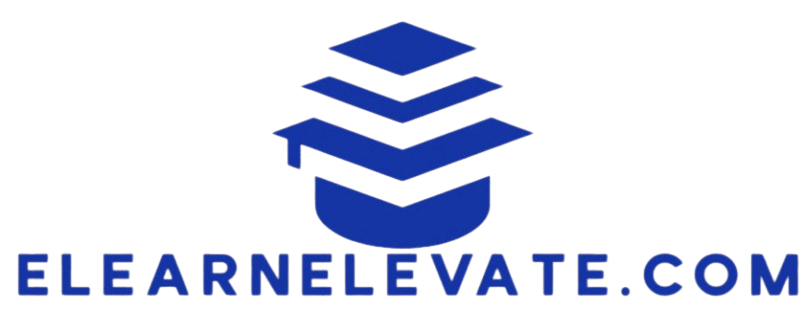The Benefits of Continuous Learning in Business
In today s fast-paced business landscape, the significance of continuous learning is paramount. Organizations that place a premium on ongoing development not only maintain their competitive edge but also cultivate higher employee performance and satisfaction.
This article delves into the essentials of continuous learning, guiding you through the creation of a culture that embraces it, the implementation of effective strategies, and the measurement of success.
You ll encounter common challenges along the way, as well as future trends poised to shape your learning approach. Explore how continuous learning can revolutionize your business and set you on a path to transformative success.
Contents
- Key Takeaways:
- Defining Continuous Learning
- Why Continuous Learning is Essential for Businesses
- Improving Employee Performance and Satisfaction
- Implementing Continuous Learning in Your Business
- Measuring the Success of Continuous Learning
- Overcoming Challenges in Continuous Learning
- Future Trends in Continuous Learning
- Technologies and Strategies to Watch Out For
- Frequently Asked Questions
- What is the importance of continuous learning in business?
- How does continuous learning benefit employees?
- What are the benefits of continuous learning for employers?
- What are some examples of continuous learning in business?
- How can businesses encourage a culture of continuous learning?
- What are the potential risks of not investing in continuous learning?
Key Takeaways:

Continuous learning helps businesses stay competitive, improves employee satisfaction, and adapts to future trends. By focusing on the benefits of lifelong learning and measuring success, organizations can ensure long-term advantages.
Defining Continuous Learning
Continuous learning embodies the ongoing, voluntary desire to learn new things that fuels both personal and professional growth. In today’s ever-evolving workplace landscape, this pursuit takes many forms, such as on-the-job training, workshops, and online courses, all designed to enhance your skills and foster professional advancement.
Leading organizations like Deloitte and Intellum underscore the significance of continuous learning in boosting employee engagement and retention. By offering a variety of learning opportunities, companies can cultivate a vibrant learning culture that aligns with their organizational objectives while addressing the dynamic learning needs of their workforce.
Why Continuous Learning is Essential for Businesses
Continuous learning stands as a vital pillar for you as a business leader aiming to elevate productivity, retain top talent, and secure a competitive edge in your industry.
As the working landscape shifts, organizations that prioritize ongoing education position themselves to adapt more effectively to changes. This approach allows companies to innovate their offerings and enhance employee satisfaction.
Act now by embracing a culture of learning to boost engagement and performance. This active approach not only amplifies employee engagement but also fosters improved performance, resulting in higher retention rates and overall business success.
Staying Competitive in a Fast-Changing World
In a rapidly evolving landscape, your organization s competitive edge relies heavily on a steadfast commitment to ongoing education and skill development. Companies that prioritize continuous learning position themselves to innovate their products and services, allowing them to respond swiftly to market demands and shifts in consumer behavior.
This adaptability enhances your organization s flexibility and fosters an environment where employees feel empowered to contribute both creatively and strategically.
Take cues from industry leaders like Google and Amazon, who demonstrate how investing in employee education can lead to significant innovations, enabling them to set trends rather than simply following them.
For example, Google s focus on employee development has birthed groundbreaking projects like self-driving cars, while Amazon s dedication to upskilling has solidified its status as a leader in e-commerce logistics.
In today s marketplace, maintaining a competitive edge demands not just the ability to react but the foresight to innovate. Education becomes a crucial pillar for firms like yours that aspire to thrive amidst constant change.
Implement continuous learning strategies in your business today to unlock new potentials and drive success.
Improving Employee Performance and Satisfaction
Improving employee performance and satisfaction is one of the most rewarding benefits you can reap by implementing continuous learning initiatives within your organization. When you offer tailored learning opportunities like coaching, feedback, and professional development programs employees feel valued and engaged.
This investment in their growth pays off big time! It not only elevates their individual performance but also creates a positive workplace culture, fostering loyalty and reducing turnover rates.
In fact, a study by Gallup revealed that organizations with high employee engagement can enjoy up to 21% greater profitability. By incorporating structured coaching sessions and regular feedback, you actively promote a mindset of continuous improvement within your team.
Take Google s renowned Project Oxygen as an example; it demonstrated that effective managers those who prioritize employee development lead to teams with superior performance ratings.
This shows that when employees receive ongoing support and constructive feedback, they don t just excel in their roles; they also develop a deeper commitment to your organization, ultimately driving success for everyone involved.
Implementing Continuous Learning in Your Business

Implementing continuous learning in your business demands a strategic approach that nurtures a strong learning culture. This culture places a premium on employee development and engagement.
Blend training programs with various learning methods to achieve this. Consider methods such as social learning, microlearning (short, focused segments of learning), and tailored certifications that address the diverse needs and preferences of your workforce.
By weaving learning into the very fabric of your organization, you ensure that your employees are not just prepared but empowered to tackle evolving challenges with confidence and skill.
Creating a Culture of Learning
Creating a culture of learning within your organization is crucial for boosting employee engagement and cultivating a supportive workplace environment. By embedding continuous learning as a core value, you can inspire your team to actively pursue personal growth, seek out coaching and feedback, and collaborate with their peers.
This culture empowers individuals and enhances teamwork, ultimately leading to improved organizational outcomes. To foster such an environment, leadership support is essential, as it sets the standard for prioritizing development initiatives.
Consider companies like Google, which have rolled out programs that reward employees for participating in learning activities, building a sense of belonging and camaraderie among employees.
Continuous feedback mechanisms create a safe space for your team to learn from their experiences. A great example is Microsoft, which employs a coaching approach to promote skills enhancement. This demonstrates that investing in employee development can lead not just to personal growth but also to significant organizational success.
Utilizing Various Learning Methods
Utilizing a variety of learning methods is essential for meeting the diverse needs of employees and enhancing their development experience. By combining traditional training programs with innovative approaches like workshops, podcasts, and certifications, you can cater to different learning styles and preferences.
This variety of methods not only keeps you engaged but also maximizes knowledge retention and performance improvement. Integrating e-learning modules, microlearning opportunities, and social learning (learning from each other through collaboration) platforms allows you to create a rich tapestry of learning experiences.
These diverse formats empower you to choose how you want to learn, making it easier to absorb information at your own pace. Technology plays a pivotal role in this integration, providing real-time feedback, interactive elements, and access to a vast array of resources.
Embracing a culture of continuous learning not only supports your growth but also aligns with organizational goals, fostering a workforce that is agile, innovative, and ready to adapt to evolving challenges.
Measuring the Success of Continuous Learning
Measuring the success of your continuous learning initiatives is essential for understanding their impact on employee satisfaction and performance enhancement.
By establishing important measures, you can effectively assess the effectiveness of your learning programs and monitor keeping knowledge over time.
This data-driven approach gives you the power to improve your strategies, ensuring that you consistently meet the evolving needs of your workforce.
Key Metrics and Indicators
Important measures are essential for assessing how continuous learning impacts employee satisfaction and overall performance improvement.
By analyzing data such as participation rates in training programs, employee feedback, and productivity levels, you can uncover valuable insights into the effectiveness of your learning initiatives.
To deepen these insights, examine specific metrics like training program completion rates, assessment scores, and employee retention rates.
High completion rates indicate strong employee engagement, while assessment scores reveal how well employees are mastering new skills.
Investigating retention rates offers critical insight into whether continuous learning positively influences career longevity within your organization.
By closely monitoring these indicators, you highlight the success of your educational strategies and make informed decisions about future investments and necessary adaptations in your learning programs.
This ensures they evolve to meet both employee and organizational needs seamlessly.
Overcoming Challenges in Continuous Learning

Overcoming challenges in continuous learning is crucial for maintaining employee engagement and enhancing performance within your organization.
You may face common obstacles like time constraints, limited resources, and insufficient support, which can significantly impede the effectiveness of your learning initiatives.
However, by pinpointing these barriers and implementing customized solutions, you can cultivate a more supportive environment that fosters ongoing education and skill development!
Common Obstacles and Solutions
Common obstacles to effective continuous learning often include time constraints, lack of engagement, and insufficient resources allocated to training.
To tackle these challenges, organizations must implement strategic solutions that promote employee motivation and ensure that learning opportunities are easily accessible and relevant.
One significant hurdle you might encounter is resistance to change, especially from long-standing employees who may be skeptical of new training initiatives.
A compelling example comes from a leading tech firm that effectively navigated this resistance by involving employees in the decision-making process, allowing them to voice their concerns and contribute ideas.
A lack of management support can stifle learning efforts, so it s essential for organizations to invest in leadership development programs that highlight the importance of continuous learning.
When management demonstrates a commitment to this culture, employees are far more likely to embrace it.
Flexible training schedules and interactive learning platforms can enhance engagement, ensuring that everyone benefits from the opportunities provided.
Future Trends in Continuous Learning
The future of continuous learning is set to be transformed by emerging technologies and innovative strategies designed to elevate the learning culture within your organization.
As you recognize the value of employee engagement and the necessity of ongoing education, you’ll find trends such as personalized learning experiences, AI-driven training programs, and immersive learning environments becoming increasingly prominent.
Embracing these advancements will not only enhance your team’s skills but also foster a culture of perpetual growth and development.
Technologies and Strategies to Watch Out For
Emerging technologies are changing continuous learning. This makes it more effective and accessible.
Key innovations like interactive learning tools and AI-driven training programs deliver personalized experiences tailored to your needs. These advancements make training smoother and much more engaging!
Interactive simulations through virtual reality training allow you to practice real-world scenarios in a safe and controlled environment. This elevates the learning experience.
Adaptive learning platforms analyze your performance data. They dynamically adjust content, ensuring you progress at your own pace while continuously refining essential skills.
AI assessments give instant feedback. This enables you to quickly identify your strengths and areas for improvement.
Collectively, these technologies cultivate a culture of continuous development. They equip you with essential tools to thrive in an ever-evolving workplace.
Frequently Asked Questions
What is the importance of continuous learning in business?

Continuous learning in business refers to the process of constantly acquiring new knowledge, skills, and information relevant to your industry and job role. It is important because it helps to keep businesses competitive, innovative, and adaptable to changes in the market.
How does continuous learning benefit employees?
Continuous learning can benefit employees in many ways. It enhances skills and knowledge, improves job performance, increases chances for career advancement, and boosts confidence and motivation.
What are the benefits of continuous learning for employers?
Employers can also reap numerous benefits from promoting continuous learning. These include a knowledgeable workforce, increased productivity, improved employee retention, and a better company reputation.
What are some examples of continuous learning in business?
Continuous learning can take many forms. Examples include attending workshops, participating in online courses, reading industry-related books, networking with professionals, and engaging in job shadowing or mentoring programs.
How can businesses encourage a culture of continuous learning?
To promote continuous learning in the workplace, businesses can offer training opportunities, provide access to educational resources, create a supportive environment, and encourage employees to set personal development goals.
What are the potential risks of not investing in continuous learning?
Not investing in continuous learning can lead to a lack of innovation and stagnant growth. It can cause skills gaps among employees, disengagement, and an inability to keep up with industry trends. Ultimately, it hinders a business’s success and sustainability.
Start your journey of continuous learning today and watch your career soar!






